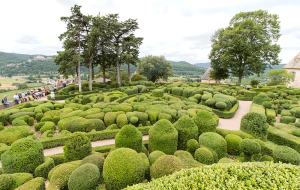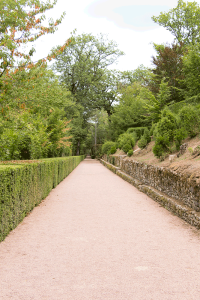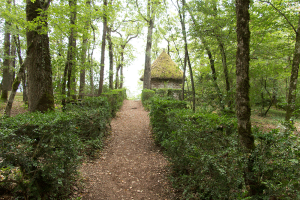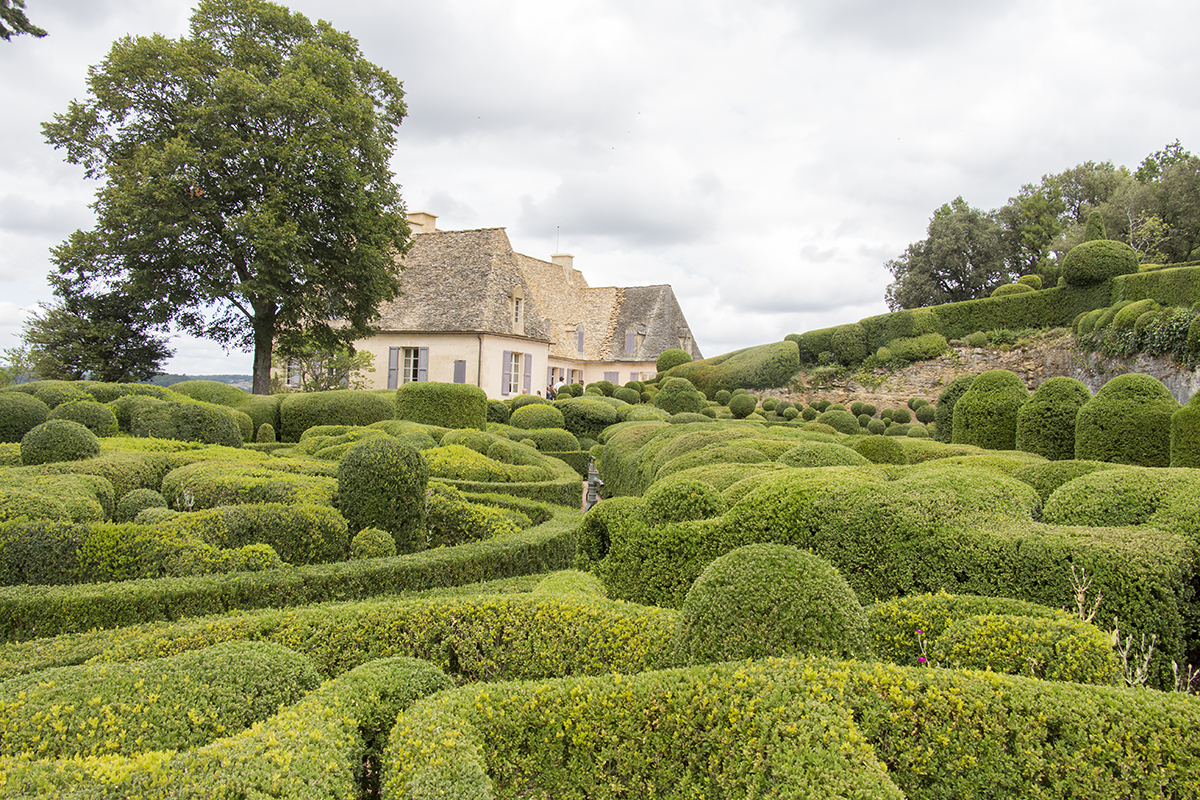 Perched on a rock outcrop high above the fertile flood plain of the Dordogne river and surrounded by the rivers meander on three sides the garden enjoys dramatic views across the country side. There has been a château and garden on this site at least since the 17th century when the then owner, Bertrand Vernet, employed Poacher (a pupil of Le Nôtre) to lay out gardens there. Little appears to have been recorded about what this looked like but in 1860s Julien de Cerval became the owner and he developed the in Italianate style; creating a lot of what is seen today.
Perched on a rock outcrop high above the fertile flood plain of the Dordogne river and surrounded by the rivers meander on three sides the garden enjoys dramatic views across the country side. There has been a château and garden on this site at least since the 17th century when the then owner, Bertrand Vernet, employed Poacher (a pupil of Le Nôtre) to lay out gardens there. Little appears to have been recorded about what this looked like but in 1860s Julien de Cerval became the owner and he developed the in Italianate style; creating a lot of what is seen today.
What is there now is a garden of two halves; one close around the château and a second  stretching away from it to the north east following the natural ridge, but both making great use of the dramatic views across the Dordogne valley. Around the chateau is hot with little shade from sun and dominated by elaborate topiary using box. As is the norm in this area; all the hedging is cut by skilled gardeners by hand. Using hand shears and plumb lines the complex curves and shapes are created by eye and the gardeners have a lot of freedom to mould the shape as they seem fit. It is not possible to say what the original topiary looked like in the 19th century as the garden had been allowed to fall in to serious neglect. It was only in 1996 that its restoration was begun and it is a testament to the regenerative nature of box that the hedges now look so good.
stretching away from it to the north east following the natural ridge, but both making great use of the dramatic views across the Dordogne valley. Around the chateau is hot with little shade from sun and dominated by elaborate topiary using box. As is the norm in this area; all the hedging is cut by skilled gardeners by hand. Using hand shears and plumb lines the complex curves and shapes are created by eye and the gardeners have a lot of freedom to mould the shape as they seem fit. It is not possible to say what the original topiary looked like in the 19th century as the garden had been allowed to fall in to serious neglect. It was only in 1996 that its restoration was begun and it is a testament to the regenerative nature of box that the hedges now look so good.
 The area to the north east of the chateau is far less formal and cool as the result of the topography and the canopy of trees which cover it. This woodland garden blends into the more formal area with a gradual move away from clipped plants but throughout the garden the range of plants is kept very limited and no part of it is what you would describe as a flower garden in the English sense.
The area to the north east of the chateau is far less formal and cool as the result of the topography and the canopy of trees which cover it. This woodland garden blends into the more formal area with a gradual move away from clipped plants but throughout the garden the range of plants is kept very limited and no part of it is what you would describe as a flower garden in the English sense.
Marqueyssac is a stunning example of what you would expect of a 19th century chateau garden in this part of the world and worth visiting if only for the elaborate topiary as a display of man’s control of nature.



